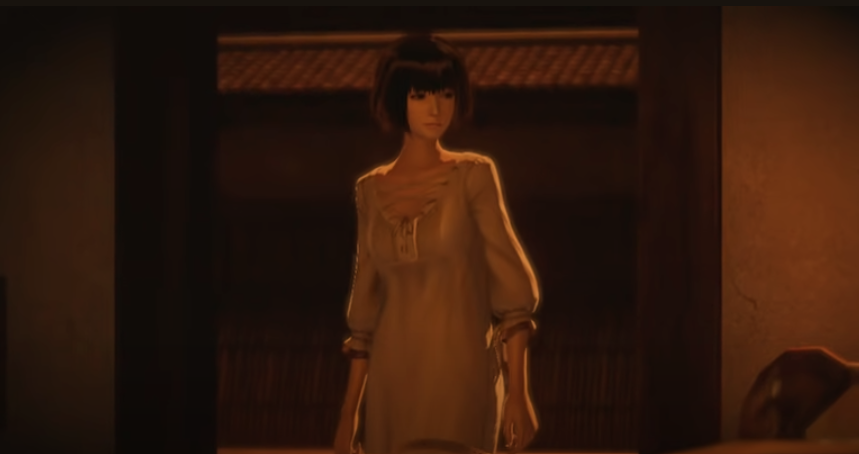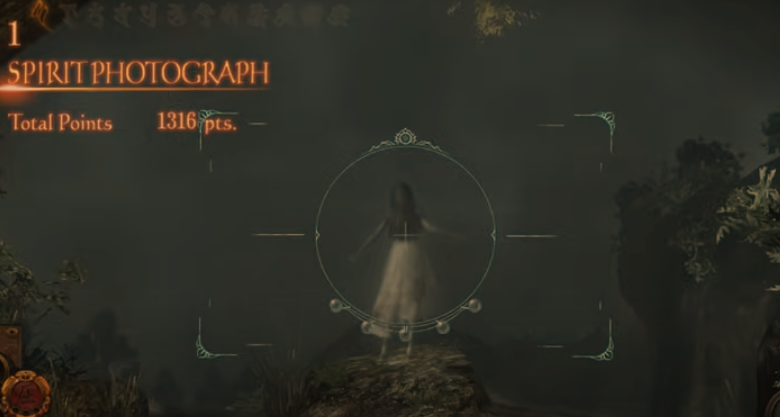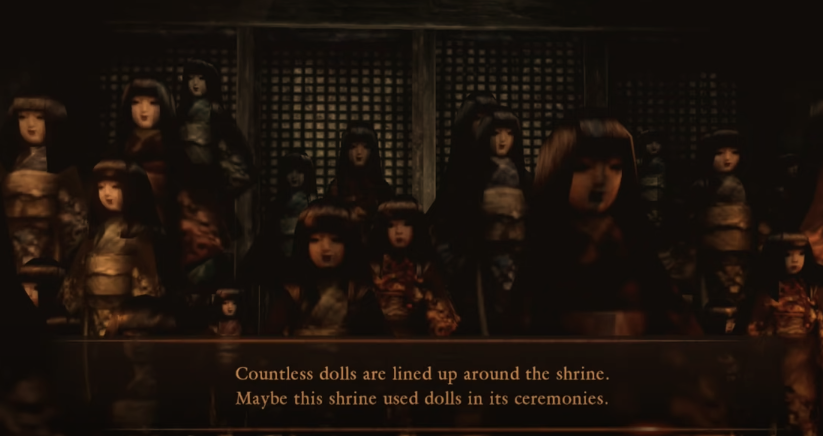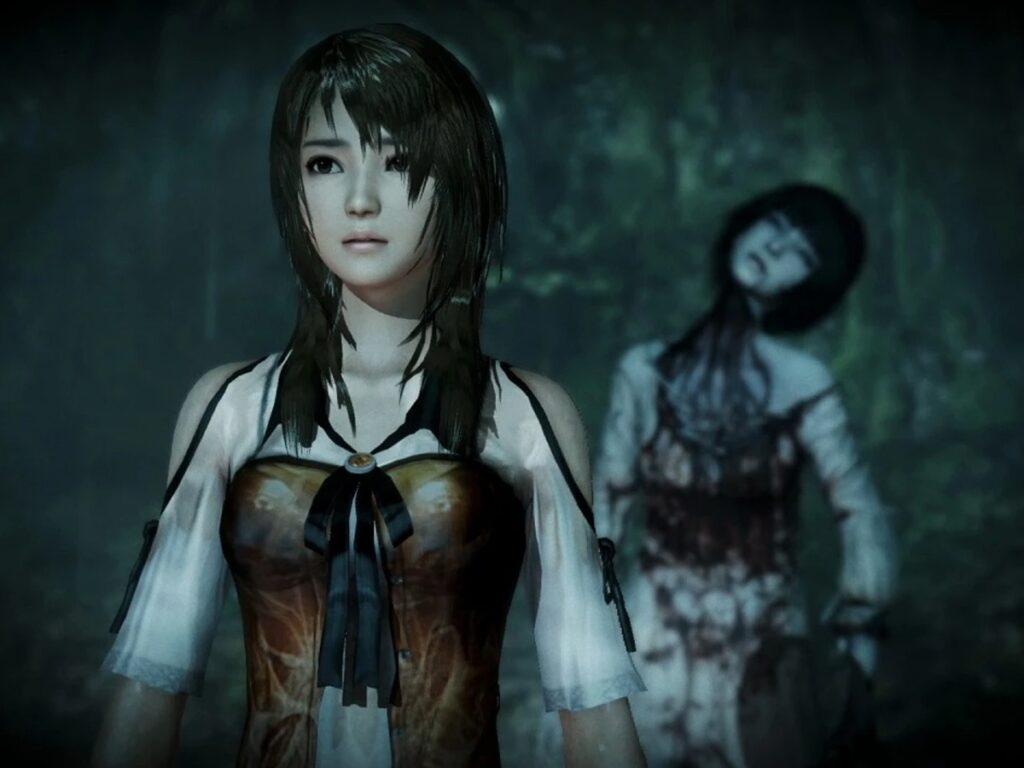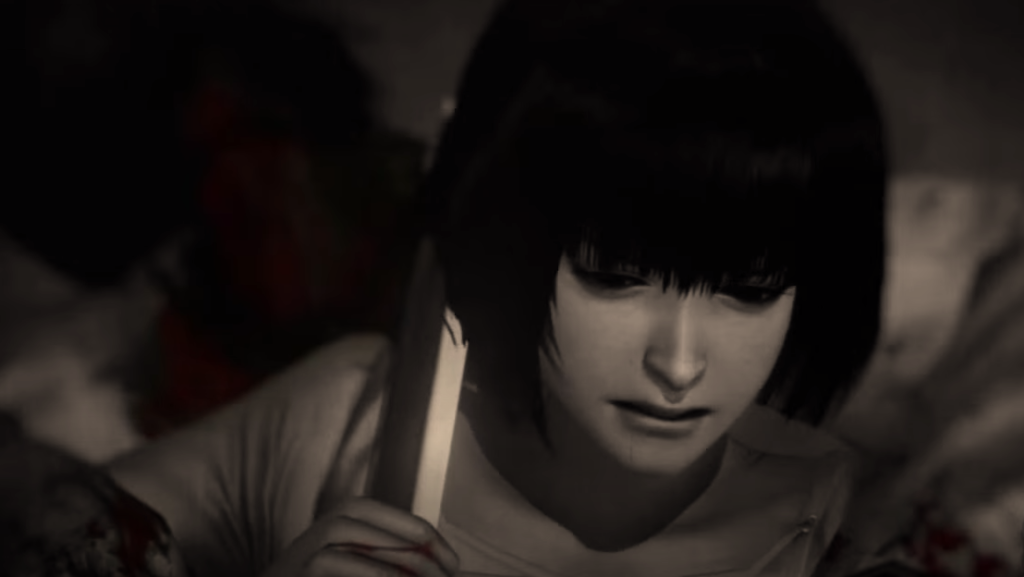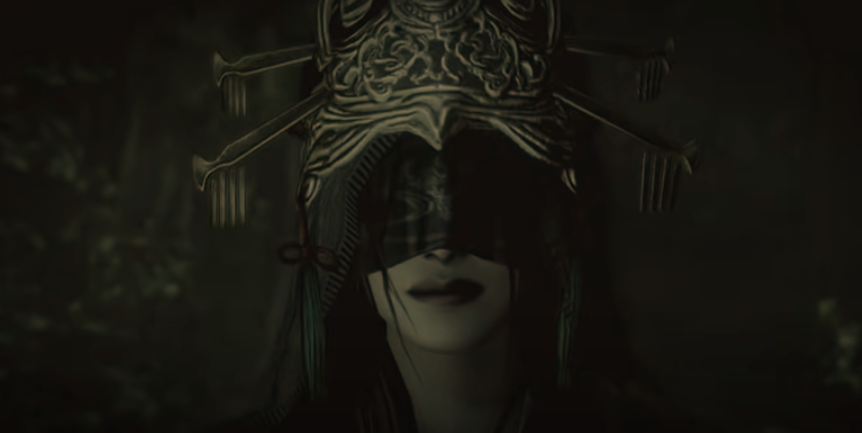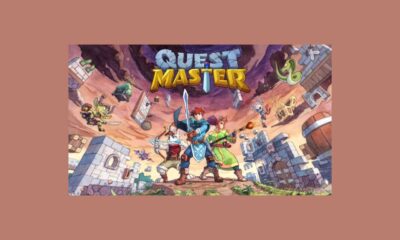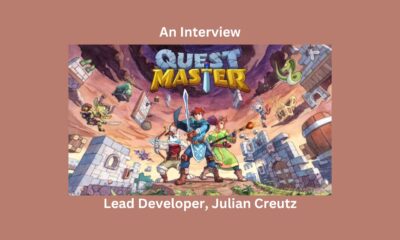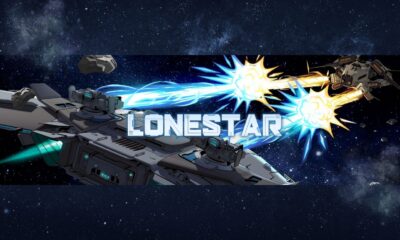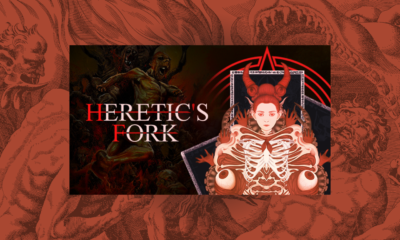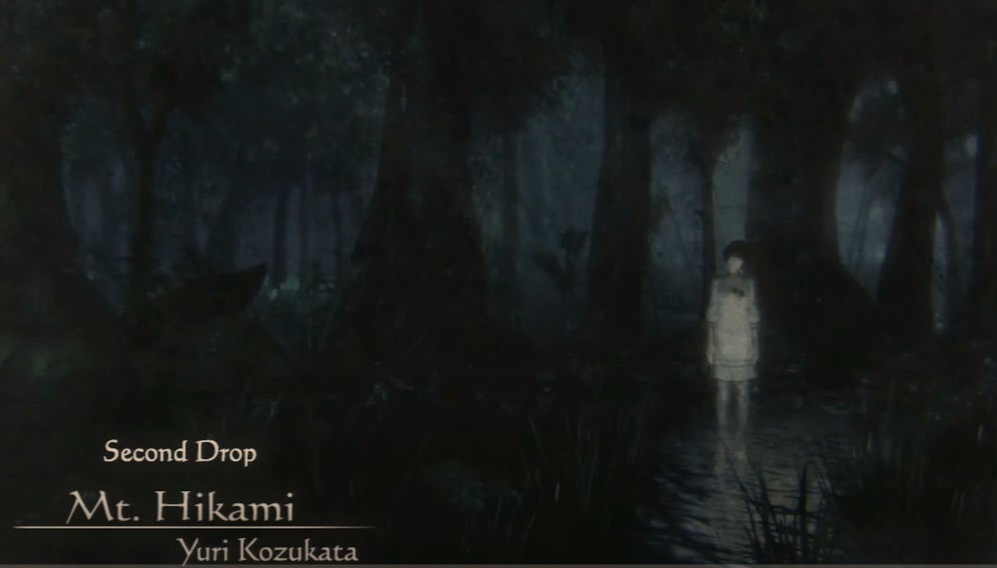
Fatal Frame 5: Second Drop Gameplay
More Videos
Published
2 years agoon
By
Daphne Fama
And it’s time for Fatal Frame 5: Second Drop! I have all my fingers, falanges, and fangs crossed that this chapter is a good one. So far, it’s been a bit of a slow burn. And while that’s not unusual for a Fatal Frame game, I’m so ready for the training wheels to come off!
Since there are so many character names, here’s a list of all relevant names this chapter:
- Yuri Kozukata – Our play character this drop. She’s an orphan rescued from suicide by Hisoka, who can see “spirit traces”, like Hisoka. She’s in possession of the Camera Obscura, the camera that can combat ghosts. She also makes questionable decisions.
- Hisoka Kurosawa – Yuri’s mentor who runs an antique shop. She also reads fortunes and finds missing items and people by following spirit traces.
- Fuyuhi Himino – A new character who is looking for her missing friend on Mt. Hikami
- Haruka Momose – Fuyuhi’s missing friend who was seen on Mt. Hikami.
- Ren Hojo – An acquaintance of Hisoka who asked her to find a photobook in the abandoned inn.
A text card provides context about where the second drop starts:
“A few days have passed since Yuri’s introduction to shadow reading at the abandoned inn…
Since then, Hisoka has gone off somewhere and hasn’t returned. Yuri worries for Hisoka, but isn’t sure how or where to start searching.
As she sits waiting at the antiques shop, a girl named Fuyuhi Himinio shows up, claiming to have enlisted Hisoka to help her find a missing person.”
Yuri, looking exceptionally bored, sits behind the counter of an antique shop drenched in sepia tones. It’s been days since she’s seen Hisoka, who left to research a client request. The antique shop is quiet and has been for quite some time.
But a bell chimes and Fuyuhi enters.
Fuyuhi seems soft-spoken and gentle and incredibly sad, and I have nothing but bad feelings about her. She just feels like someone who has a tragic fate waiting for them.
Fuyuhi tells Yuri that she’s been waiting for Hisoka’s answer about whether or not Hisoka can find her missing friend, Haruka. But when Yuri doesn’t have the answer, Fuyuhi resolves to go to Mt. Hikami to find her friend… alone. Despite its reputation as a suicide destination.
Before Yuri can speak any sense into her, Fuyuhi is gone, determined to find Haruka herself. But Yuri’s moved by Fuyuhi’s case, and decides to investigate Hisoka’s room to see if there’s any clues about the missing Haruka.
Leaving the shop, we go into the back office. There, we find a book that provides a bit of lore about Mt. Hikami. And I can’t resist a nice bit of lore.
Mt. Hikami has always been a famed ghost spot and is also home to the “Maidens of Black Water”. Women who, if you see them, will surely lead you to your death. Those caught in the maidens’ gaze will never leave the mountain. And those who die on Mt. Hikami, but don’t die in accordance with “local practices” become cursed and are forced to relive their final moments for eternity.
If you see either a looping spirit or a Maiden of Black, you’ll desperately want to take your own life.
Or so the rumors go.
It doesn’t sound like a place you should go by yourself. Or maybe at all.
Upstairs, in Hisoka’s cozy room, Yuri finds a letter and an attached photo from Fuyuhi. In it, Fuyuhi and Haruka smile happily.
This is the token Yuri needs to find Haruka.
But why would see risk everything, after all Hisoka’s warnings, to chase after someone who’s likely been spirited away?
Mikomori Hot Springs
The sun sinks behind Mt. Hikami, but Yuri makes the walk to Mikomori Hot Springs on the mountain. She clasps the photo of Fuyuhi and Haruka, hopeful that it will lead her to Fuyuhi before things go terribly wrong.
She crosses the bridge beside the abandoned inn, and see the first trace of a spirit, climbing up moss covered stairs. It’s possible it’s Fuyuhi, but at the distance it’s hard to tell. She climbs up the stairs and sees the trace again.
It’s Fuyuhi! We’re on the right track, she definitely went this way. And yet I have nothing but feelings of foreboding.
An item lies on the ground beside a small creek, and we reach to pick it up. But the moment we do a hand grabs us, forcing us to violently struggle out of its grip. Even though these grabby hands are a staple of Fatal Frame, it’s a jump scare that absolutely got me. I’m more nervous than I’d like to be to finally be on this mountain.
Yuri breaks free and claims the item — a tourist brochure of Mt. Hikami, which includes a map. How useful! It turns out we’re on our way to the Pool of Purification, and if we continue onward we’ll reach the Unfathomable Forest.
What a… charming name for a tourist spot.
As we pass close to a waterfall, we get a little wet, and we’re introduced to the “wetness meter” aspect of the game. The wetter we are, the easier a target we’ll be for malevolent spirits. That makes sense, when you consider how spirits and water are often tied together in Japanese folklore.
Above us a woman screams, and we see a dark shadow fall as she plunges down the waterfall. Yuri scarcely reacts – did she even see it?
At the end of the path, we find a pool of water, roped off. No doubt this is the Pool of Purification. It’s clearly a ceremonial place. But within it we find Hisoka’s camera obscura. That’s not a good sign.
It was swept her by the currents and caught in the shallows of the pool. So, Hisoka must be here on this mountain, alone and unarmed.
Two spirits lumber out of the pool before we can contemplate the severity of the sitation. They’re much more aggressive than the spirit in the inn. But they go down easily enough, and Yuri is left standing with the camera in her hands.
Hisoka is here, but so is Fuyuhi. We need to find her first.
We reach the top of the cliff, where the waterfall begins, and see the spirit of a woman standing atop it. She screams – the exact same scream we heard below, and leaps, plunging to her death in the waters below.
Is this one of the looping spirits written about in Hisoka’s book about Mt. Hikami? A spirit cursed to repeat its final moments for all eternity? What a terrible way to go.
We turn and reach a fork in the path, indicating that we’re close to the unfathomable forest. We turn left and see a spirit trace of Fuyuhi. On the ground is a note she’s left behind. Has Haruka been spirited away, Fuyuhi wonders?
At this point, yes. I think it’s safe to say she has been.
We follow the trace deeper into the woods. Stone lanterns have been lit, but instead of being comforting, the flames only add to the feeling that we’re somewhere we shouldn’t be. Who lit all these lanterns in a place that is supposedly abandoned?
We delve deeper into the woods and find a crumpled note. The writer states that he’s seen the same girl hang herself over and over. But whenever he tries stop running he winds up right back where he started. Then, he stated he start to mimic her, hanging himself. But that death took a long time to come. And yet when he awakes, it all starts again.
A looping spirit watching a looping spirit. But it’s interesting that ghosts can write notes.
We find Fuyuhi again, her back to us like always. But her trace ends here.
But where she was standing is a note – and it’s one written with desperation, love, and a more than a smidge of darkness. Fuyuhi states that she wishes she was the one that disappeared. That Haruka is irreplaceable to her. And that she has a secret she wishes she’d told her before Haruka vanished, and that she wishes they could end things together.
Is this letter influenced by Mt. Hikami, which seems to drive people to self-destruction? Or does this truly reflect Fuyuhi’s heart? It’s hard to tell.
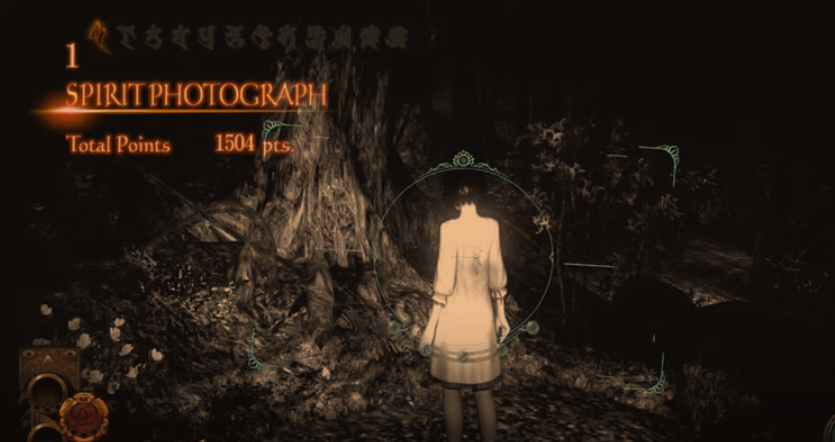
Yuri uses the note to try and pick up Fuyuhi’s trace again, but the moment she glances up a hanged woman is staring down at her. The hanged woman vanishes, and Yuri’s set upon by a gang of ghostly men.
They’re dispatched easily enough.
A little deeper into the woods and we find an old, abandoned tent, with a note peeking out of its entrance. The tent belongs to a man who came to the woods to die. It feels right, he says, and he isn’t lonely. There are plenty of people here who are already dead.
But one woman is watching him. A woman in white. And he knows that one day she’ll come for him.
It’s worth it to stray off the beaten path to find spots like these. The lore is what makes the Fatal Frame series so rich, and there’s so many items to find. It’s better to find them during the drop then spend your hard-earned points on them!
Not too far from the tent we find a series of small Jizo statues arranged around an air hole. A low howl of wind comes from the hole. This, Yuri infers, is a place of some significance. Perhaps later on we’ll find out what that significance is. But Fuyuhi is waiting, and we leave this mossy nook to find her.
We cross a bridge, and arrive at a shrine. There again we catch the trace of Fuyuhi.
But I hate this shrine. I hate everything about it.
It’s a shrine dedicated to dolls.
Why would anyone come here? Seriously, why?
And don’t they look a little TOO similar to the one in the abandoned inn? The one who turned to stare at us?
Another note of Fuyuhi’s has been discarded here. In it, she reminisces about Haruka. I really think she must be in love with her. But the moment we drop the note we’re treated to a child ghost. The Girl Watching from Behind.
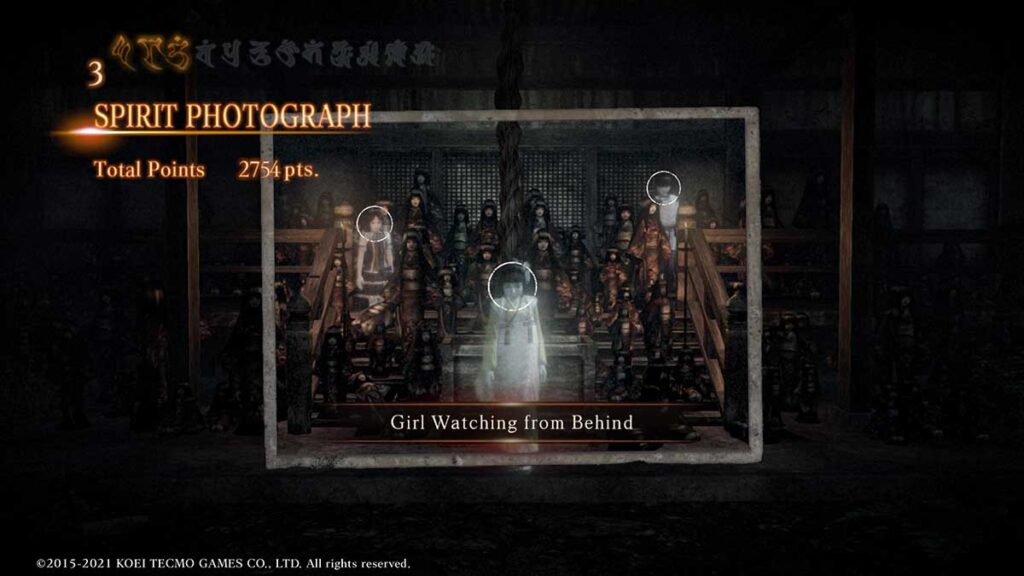
She’s undoubtedly connected to this doll shrine. She and her staring companions don’t do anything but stare, and I’m grateful for that. I hate ghost children.
But as we try and recatch Fuyuhi’s trace, we’re beset by another spirit. He’s alone and easy enough to take down.
Yuri searches a little farther and sees a woman plunge to her death from a cliff, hitting the ground. Snapping her photo is tough, but when we grab it, we see that it says “Pushed Woman”. A note beside where her body fell is titled “Apparent Suicide Note” and says: I can die alone here. I can take things slowly. A peaceful, dignified death.
Someone thought she was taking a little too long, I suppose.
But just a bit beyond that is Fuyuhi. The real Fuyuhi. Yuri calls to her, but she seems to be on a trance. She murmurs that she’s certain Haruka is here on this mountain. But when Yuri lays a hand on Fuyuhi’s shoulder her mind is flooded with a vision.
Five school girls, standing hand-in-hand in a pond, wading deeper into it, as if they mean to drown. Then, only Haruka and Fuyuhi, lying in the ponds shallows. They were the only two to survive a group suicide attempt.

The vision ends, and Yuri understands the deep connection the two girls share. She promises Fuyuhi that she’ll find Haruka. Fuyuhi, placated for now, follows her.
We find another note on the ground from a person who says they felt compelled to come to this mountain before sunset, and sink into its waters, where a woman calls for them. But they have to sink before sunset. And they have to write. It didn’t matter what they wrote – only that they did it.
It’s nice to have a reason for the absolute scrapbook of notes we’re finding everywhere.
But who’s calling these people, and for what reason? Is this woman the reason why Mt. Hikami has a reputation for spiriting people away?
Another writer of a different note seems to have encountered the same woman. But he seems to think she was a shrine maiden, and he was happy she was there to watch his final moments.
A little farther and we’re attacked by a ghost who seems unlike the others. She’s almost… familiar. She wears a dress, and she seems lost, maybe confused? We exorcise her, but the moment Yuri touches her, we’re faced with the woman’s memory.
She was in the woods and saw someone jump from a cliff. But the broken body got up and chased her until she reached the cliff overlooking the waterfall. And it was there that the terrifying, broken ghost pushed her. The confused woman was the very first ghost we saw here – and now she’s cursed to run and fall off that waterfall forever.
We draw back towards the doll shrine, and the children are here. Now they want to play, but every time they lay hands on you, you take damage. They’re mischievous, fast, and utterly annoying.
We exorcise and touch The Girl Watching from Behind and see her memory. She and the other children were lured by a girl with white hair further into the mountain. The same girl in Ren Hojo’s dream, who was stabbed in the back and pushed into the black box.
Once the fight is done, we find Hisoka’s pendant by the river. Touching it, we see a vision of Hisoka fighting in the water, only to be pulled under by a ghostly woman. The camera obscura floats away, and Hisoka is nowhere to be seen.
Fuyuhi vanishes and there’s someone singing nearby. But a strange, off-kilter song.
“Play with me forever. I will always remember you. I know I’ll remember you. Forever and ever—”
We follow it to find Fuyuhi, standing across the river, a blade in hand. As she sings, she raises the blade to her own neck and the song abruptly cuts off. When Yuri brings herself to look again Fuyuhi is gone.
No, she’s not gone.
She’s right behind her.
Her neck is scarlet, as is the front of her dress. And her head lolls in a strange, disjointed way. She lunges, and here comes the boss fight.
You exorcise her and she turns to her unbloodied self, collapsing to the ground. Yuri touches her, and again Fuyuhi’s memories flood into her.
Fuyuhi sees a blade on the ground and picks it up. A few yards away, she sees a spirit cutting its own throat.
As if her hand is being controlled by someone else, Fuyuhi puts the blade against her own neck, mimicking the spirit, and she struggles desperately against it. Behind her, we see the spirit that had cut its own throat with a vice on Fuyuhi’s hand, trying to force the blade against Fuyuhi’s skin.
In the mist Fuyuhi sees Haruka — or what she thinks is Haruka. And in her surprise her resolve loosens and the spirit takes control, forcing Fuyuhi to cut her own throat. But the spirit that was watching her wasn’t Haruka at all. Rather, a woman wearing a veil. The woman, perhaps, described in so many notes. This woman watches Fuyuhi die.
The memory fades but the woman who watched Fuyuhi die doesn’t. And now she has her sights set on Yuri.
This woman, a spirit, is our tutorial in being “tainted”. Some ghost attacks can leave us tainted by the Black Water. While tainted our health continuously decreases. Only by purifying ourselves or defeating all present ghosts can we cure this status effect.
This fight is challenging because of the status effect, but we defeat her. She kneels, and we perform the fatal glance, glimpsing her memories.
A man flees a woman who seems intent on killing him. Is this mad woman the woman we exorcised? No matter who it is, Yuri is certain that she’s the one who brought Fuyuhi here. The one who made her kill herself.
Where does that leave us? Empty-handed, traumatized, without our only mentor and friend. Yuri can only retreat to the antique shop and try to regroup.
FINAL VERDICT
Well! Fatal Frame 5 Second Drop is certainly the best part of the game so far. The atmosphere is spot on. Fatal Frame is a series that has always prided itself in grounding its games in Japanese environments and it’s done so perfectly with this drop.
It’s also done a much better job introducing us to new mechanics while also allowing us to practice the basics. I never felt too overwhelmed with fights, either in number or difficulty.
The only true critique I can give is that the level felt flat at times. While it’s great that they created an in-game rationale for why there are so many notes, it sometimes felt too much. But I enjoyed the ability to see the backstory of some the more memorable ghosts.
Overall I had a great time. I’m glad I stuck through it.

Completion Time: 2 hours, approximately
You may like
-
Let’s! Revolution! @ PAX: Minesweeping Madness
-
Interview with Creative Director Michael Highland: Let’s! Revolution! @ PAX
-
Quest Master @ PAX: A Dungeon-Builder First Look
-
Interview with Game Dev Julian Creutz: Quest Master @ PAX
-
LONESTAR @ PAX: Spaceships and Bounty Hunting
-
Heretic’s Fork Review: Punish Sinners Like it’s Your Job (It Is)
Gaming
Stygian: Reign of the Old Ones (2019), a Game Review
Stygian: Reign of the Old Ones (2019) is a tactical role-playing video game developed by Cultic Games, evoking Lovecraftian horror.
Published
3 months agoon
April 30, 2024
Stygian: Reign of the Old Ones (2019) is a tactical role-playing video game developed by Cultic Games, evoking Lovecraftian and cosmic horror. Published by Fulqrum Publishing, this game is available through Linux, macOS, and Windows. This review will cover the $19.99 Steam release.
The Great Old Ones have awakened, exiling Arkham after the events of Black Day. Design your character and face the abominations of Arkham. Explore the 1920s through a Lovecraftian aesthetic as you unravel the secrets that plague Arkham, facing unknowable cosmic horror and malicious abominations.
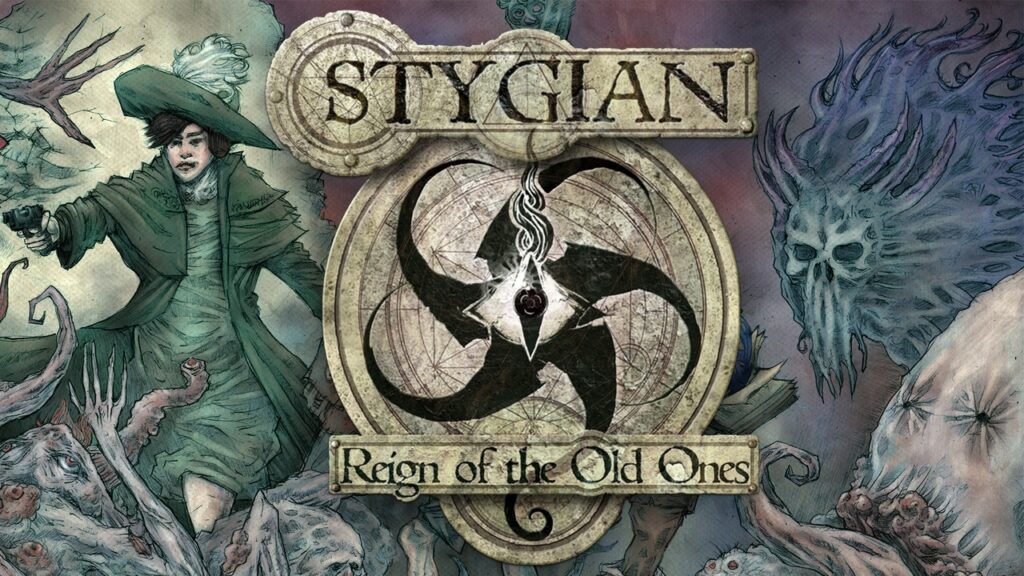
What I Like Stygian: Reign of the Old Ones
The depth of character creation starts the game off on the right foot. While appearance has various options, the game provides greater variety in motives, age, and origins, adding different gameplay elements. For example, age reflects lived experience and physical competency. The younger your character, the less experienced but more physically capable. This dynamic requires trial and error to find the best choice for you.
The paper cutout art provides a unique interpretation of a familiar (but stylish) Lovecraftian aesthetic. While not the most haunting execution of the Lovecraftian, it still manages to unsettle and unnerve while maintaining visual interest. That said, if the style doesn’t suit the player’s taste, Stygian: Reign of the Old Ones might leave that player wanting.
While I find the story engaging and the mysteries worth exploring, there’s a massive caveat to that claim. Regardless, if you fancy the Lovecraftian, few care as deeply and express as much knowledge of the genre as Cultic Games in this installment. This love and knowledge shines through in the often subtle allusions and references to the expanded universe. It may earn its place as the most Lovecraftian game out there.
The characters vary in interest and likability, but there’s usually something about them to add to the overall mystery. Naturally, this remains most evident in the companions that accompany the player on their journey.
In terms of horror, Stygian: Reign of the Old Ones achieves notable success. Despite the subjective points of aesthetics, the game brings out the most unsettling and uncomfortable elements of Lovecraftian and cosmic horror.

Tropes, Triggers, and Considerations
With an understanding of the Lovecraftian comes the question of how to deal with racism. Most properties try to remove this context, but Stygian: Reign of the Old Ones recognizes the text and era (the 1920s) with caricatures such as a lunatic in blackface. I won’t say it fully explores these toxic elements, but it’s not painted in a positive light.
Insanity and mental illness play a large role in the mechanics of the game, such as becoming a key component of casting spells. Loosely related, drug addiction and usage are mechanics with varying degrees of necessity depending on your build.
If these are deal breakers, perhaps give Stygian: Reign of the Old Ones a skip.
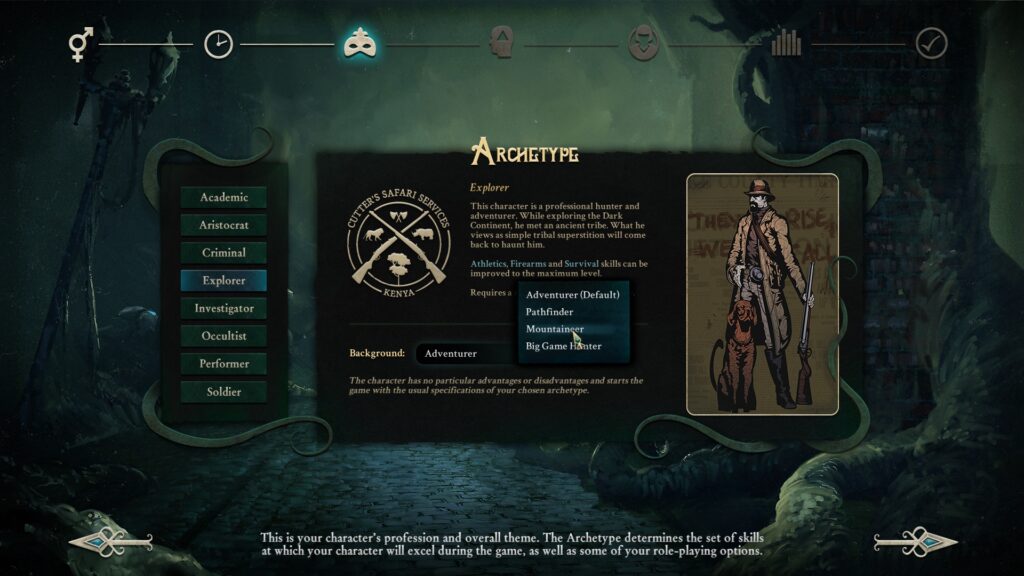
What I Dislike about Stygian: Reign of the Old Ones
In terms of story, this game is unfinished, leaving many plots, quests, and arcs with unsatisfying cliffhangers. My understanding is that Cultic Games planned to finish the game, but money ran out, and the focus shifted to an upcoming prequel. I imagine the goal is to use this new game to support a continuation. But that doesn’t change the unfinished state of Stygian: Reign of the Old Ones. The beginning and middle remain filled with content, but the final act (loosely stated) falls monstrously short.
While this unfinished state mostly affects content, I did run into game-breaking bugs. From my understanding, these bugs completely hinder progress. Most are avoidable, but some are unlucky draws.
It’s these points that make this a challenge to recommend, requiring the potential player’s careful consideration.

Final Thoughts
Stygian: Reign of the Old Ones accomplishes what many games fail, bringing to life the Lovecraftian. Unfortunately, this game falls short at the end and leaves game-breaking bugs as potential deterrents for full enjoyment. If what you read above entices you, it may be worth the investment. However, it’s unfair to recommend this game within its compromised state.
Gaming
Ashen (2018), a Game Review
Ashen (2018) is a souls-like action RPG developed by A44 and published by Annapurna Interactive available across all platforms.
Published
3 months agoon
April 30, 2024
Ashen (2018) is a souls-like action RPG game developed by A44 and published by Annapurna Interactive. This game provides a single-player and multiplayer experience with passive multiplayer mechanics. For this review, I am discussing the 39.99 Steam release, but it’s also available in the Epic Game Store, Xbox, Nintendo Switch, and PlayStation.
In this bitter world, your character seeks to make a home for yourself and others. This goal requires you to fight for every inch of land, building connections and alliances to maintain a thriving village. Venture further to make the world a more hospitable place, but know the further you travel, the greater the threats.
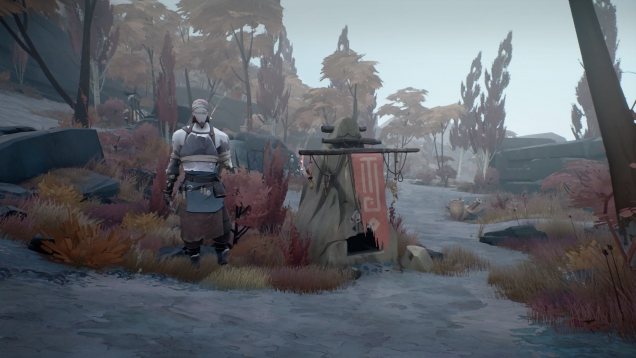
What I Like about Ashen
In 2017, Ashen earned a nomination for the Game Critics Awards’ “Best Independent Game.” It would later earn several more nominations in 2019. At the National Academy of Video Game Trade Reviewers Awards, it received nominations for “Game, Original Role Playing” and “Original Light Mix Score, New IP.” It was nominated for “Most Promising New Intellectual Property” at the SXSW Gaming Awards. Finally, at the Golden Joystick Awards, it earned a nomination for “Xbox Game of the Year.”
The multiplayer experience remains essential for Ashen, focusing on you and a partner venturing together to explore an open-world environment. However, the single-player experience is my focus and the game accounts for this gameplay. Ashen often pairs you with a villager who helps with the challenges.
The art style remains a plus throughout the gameplay. Though muted in colors and lacking finer details, the style creates a unique world that allows players to get lost along their journey. If the aesthetic doesn’t evoke that curiosity, then Ashen becomes hard to recommend.
Vagrant’s Rest and the inhabitants remain a strong incentive to continue on your journey. Seeing the progression of the town and building connections with the people provide the most rewarding experience.
In terms of horror, the art style often evokes an eerie atmosphere. However, I won’t go so far as to say the game is haunting. Instead, it evokes emotions that can unsettle and unnerve the gamer.

Thoughts and Considerations
The souls-like influence remains straightforward. Progression requires the player to defeat enemies and collect currency for weapons or certain item upgrades. Ashen simplifies and focuses its gameplay, reducing variety to polish its choices. The gameplay remains fluid, with a few hiccups that might be a computer issue.
If you prefer magic or defined classes, the gameplay doesn’t enable this variety. Item upgrades and choices define your playstyle, allowing most items to be playable at any stage of gameplay.
Weapons make a greater difference in playstyle. Most of these differences are self-evident (i.e. blunt weapons are slower but stun), but upgrades make any weapon viable. You pick an aesthetic and function, sticking with it until something better catches your eye.
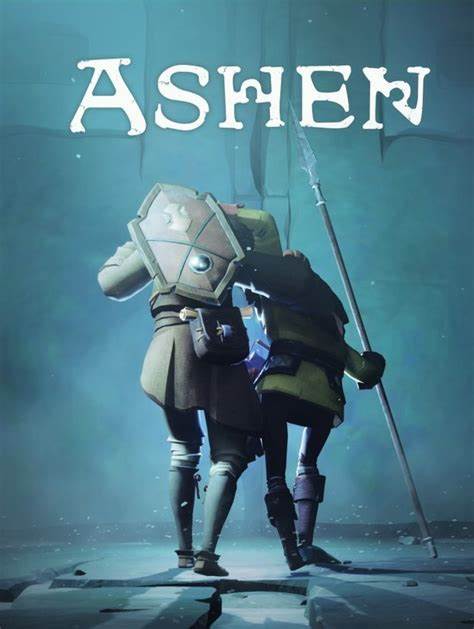
What I Dislike about Ashen
As mentioned, the game had some technical issues. I often assume this to be my computer, but I did note a few others mentioning similar issues. The gameplay remains fluid, so take this comment as a small point of consideration.
With limited roleplay options, liking the characters or art style remains essential for your time and money investment. As mentioned, the game doesn’t hold the variety of FromSoftware, which means their selling point comes from that unique art style and world.
Passive multiplayer is a major part of the marketing for Ashen. While I don’t mind this mechanic, 6 years after release reduces the overall impact. When so few wanderers appear in your game, it’s hard to see the overall appeal.

Final Thoughts
Ashen delivers a highly specialized souls-like experience, preferring to perfect what it can at the cost of variety. If the art appeals and the thirst for a souls-like has you wanting, Ashen stands as a strong contender. However, there are many contenders which make this hard to overtly recommend.
Gaming
I Have No Mouth, and I Must Scream (1995), a Game Review
I Have No Mouth, and I Must Scream (1995) is a point-and-click horror game based on Harlan Ellison’s award-winning short story.
Published
3 months agoon
April 29, 2024
I Have No Mouth, and I Must Scream (1995) is a point-and-click horror game based on Harlan Ellison’s award-winning short story of the same name. Developed by Cyberdreams and The Dreamers Guild, this adaptation brings a new perspective to a familiar story. I heard of free purchasing opportunities for this game but cannot verify the quality. For this review, I played the 5.99 Steam release.
Play as one of the remaining humans on earth: Gorrister, Benny, Ellen, Nimdok, and Ted. Each faces a unique challenge from their common torturer, the AI supercomputer known as AM. Chosen by AM to endure torment, these challenges require the participants to face their greatest failures and tragedies.
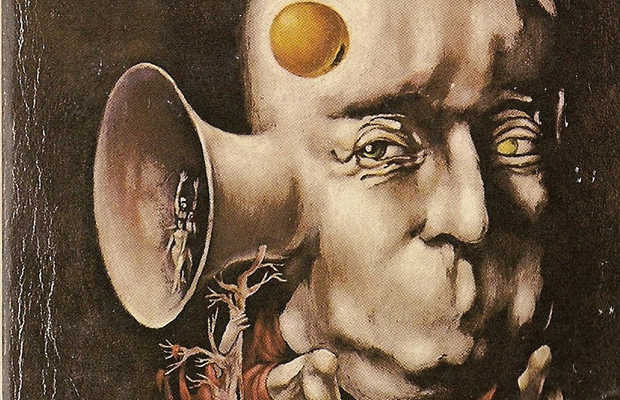
What I like about I Have No Mouth, and I Must Scream
Having experienced this story a few times, Harlan Ellison provides the most substantive execution of his vision and moral questions in this game. While all have individual merits, I assume the added content and context better dive into the relevant points he hoped to explore. He also played the voice of AM, giving us the emotional complexity of the machine as he saw it.
As the above comment indicates, I Have No Mouth, and I Must Scream remains a faithful adaptation with only one notable change. While that one change does reflect in that character’s journey, it uses that opportunity to the fullest. Where the short story left room for potentially inaccurate interpretations of the characters, this added context makes us better understand them.
The game’s writing remains a selling point for this story-driven experience. It dives further into the lore of the human characters and even allows further development of AM in the process. There are many ways to progress, and the multiple characters allow gamers to adventure further if stuck. That said, progressing individual characters to complete their journey remains essential for the true ending and experience.
As a point-and-click game made in 1995, I Have No Mouth, and I Must Scream holds up well. In many ways, it pushed the genre in its time with dynamic storytelling and game features. Harlan Ellison was someone who pushed boundaries to challenge himself and others. He saw the gaming industry as another opportunity to evoke story-driven art, a focus reflected here.

Thoughts, Triggers, and Considerations
I Have No Mouth, and I Must Scream adapts a dark and bleak story from an author notorious for his dark material. This game is no exception to that standard. Mental illness, sexual assault, genocide, and torture envelop the game. These elements are handled with attention but remain triggering to those sensitive to such dark material.
If these are deal breakers, I Have No Mouth, and I Must Scream will likely earn a skip.
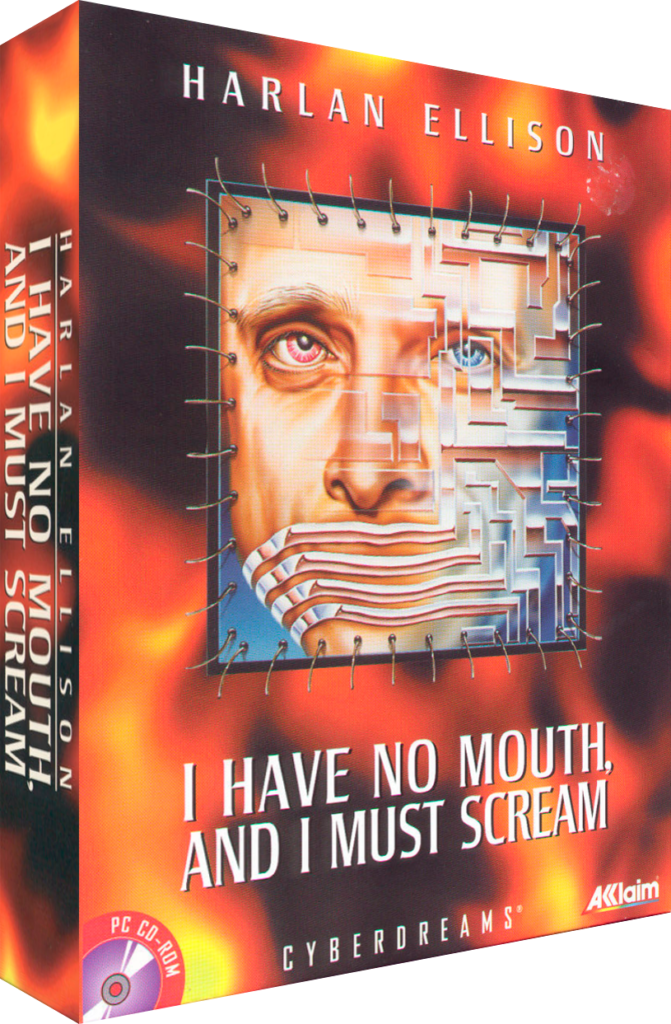
What I Dislike, or Considerations, for I Have No Mouth, and I Must Scream
While the short story remains a haunting example of fiction in every sentence, I Have No Mouth, and I Must Scream doesn’t evoke the same tension. It allows room to breathe or refocus on another character, which reduces the horror such a story evokes. While the characters participate in their torment, the loss of agency and hopelessness doesn’t translate in the execution.
Some mechanical and gameplay issues are noteworthy. For example, the saving mechanic remains dated, piling up if you save often or for specific reasons. Most of the mechanical issues stem from outdated UI from a gamer of a more modern era. Play it long enough, and elements start to click, but it needs that user investment.
Point-and-click caters to a niche audience, so modern gaming audiences aren’t inherently the demographic. The puzzle-solving and gameplay won’t win you over if the genre isn’t to your taste. Even within the genre, many of the puzzles remain challenging. For fans of the genre, this likely earns a positive merit. For those looking to continue the short story, this challenge will prove an obstacle.

Final Thoughts
I Have No Mouth, and I Must Scream provides a new opportunity for the award-winning story to reach new audiences and continue to grow. Not satisfied with repeating his story in a new medium, Harlan Ellison expands this bleak world through the point-and-click game. While not as haunting as the short story, this game provides the most context and development of any adaptation before it.


